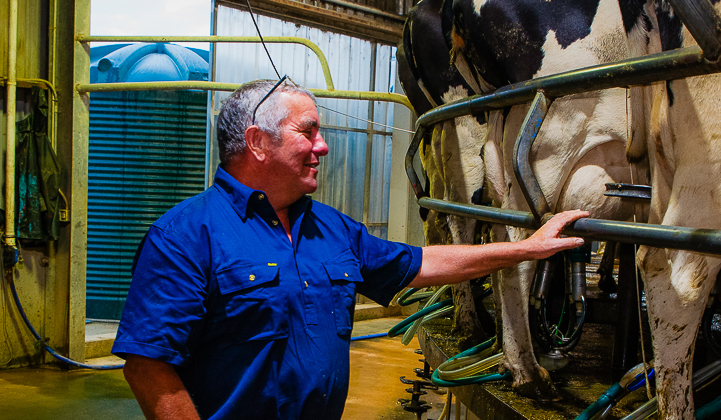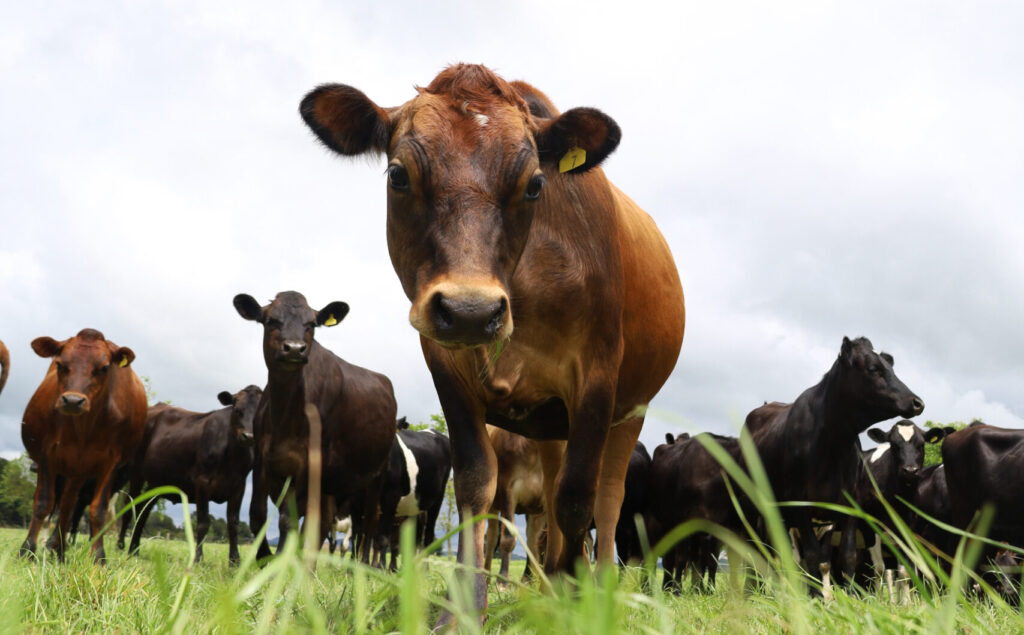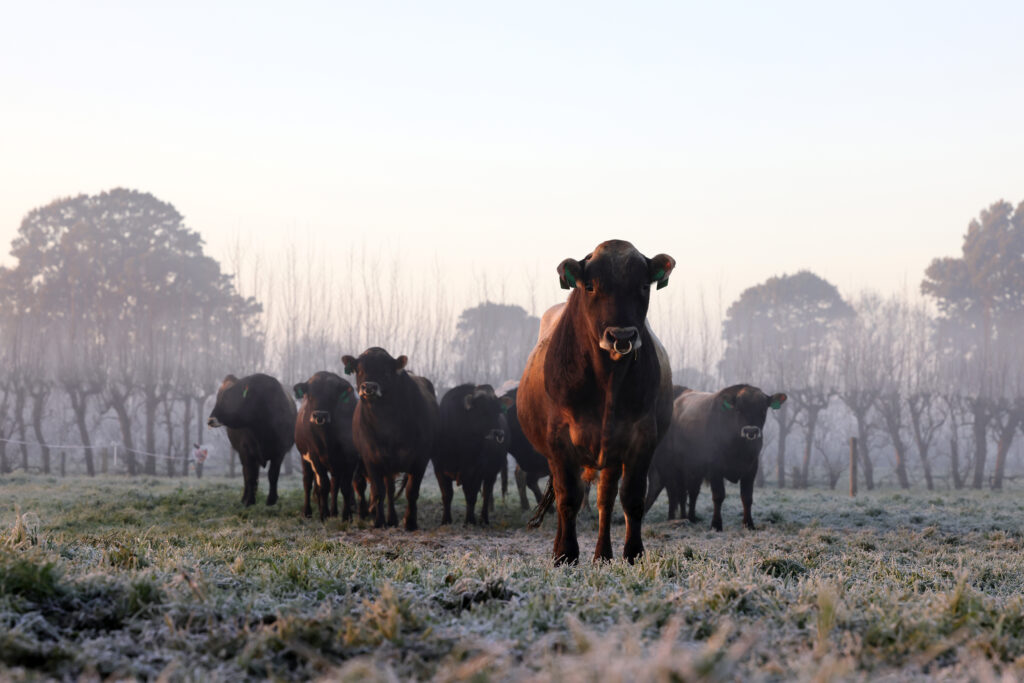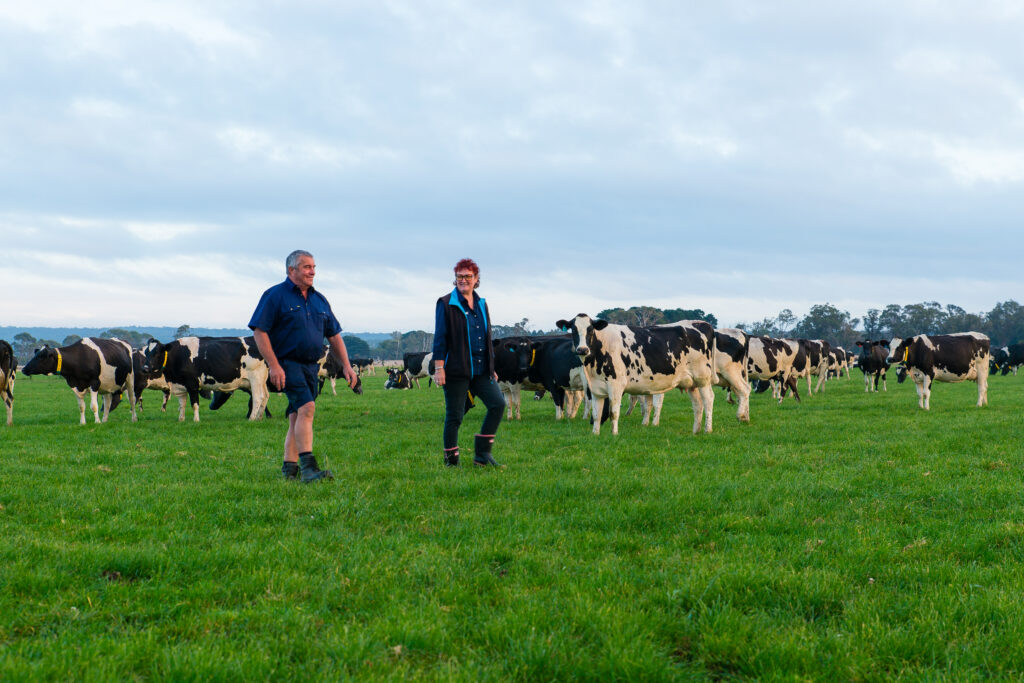Every herd has a range of cow types and performance within it. Every year brings forward a new crop of calves and an offering of elite bulls for joining. The herd’s ‘cycle of life’ gives an annual opportunity to improve important genetic traits, herd quality and farm profitability and sustainability.
Dairy cow traits important to Australian farmers commonly include; production, fertility, longevity and workability traits. Not all traits are equally heritable but those with sufficient genetic variation provide scope to improve. Research demonstrates that even in low heritability traits such as fertility, annual gains are cumulative and can make a significant difference over time.
For detailed information on genetic fertility refer to page 95 of the 2017 InCalf book for Australian Dairy Farmers (www.dairyaustralia.com.au/resource-repository/2020/07/08/incalf-book-for-dairy-farmers-2nd-edition)
The principles apply everywhere, including across the ditch, so let’s take a look at what’s been going on in New Zealand.
NZ Research Update
Recent research by Dairy NZ has focused on understanding the performance and physiology of cows with divergent fertility breeding values (BV), with the aim to accelerate genetic fertility through improved accuracy of prediction. The research has confirmed that the fertility BV does work in practice. Initial findings include:
• Large differences in 3-week submission rate, 6 week in-calf rate and not incalf rate in the purpose-bred research animals made up of two extreme fertility BVs groups (BV +5 and -5).
• Discernible differences were seen between the two groups as yearling heifers. High fertility BV heifers achieved puberty earlier and at a lower percentage of their own expected mature liveweight.
• Modelling research also suggested that genetic fertility delivers more benefit in lower-performing herd environments.
• And in a bid to find ways of identifying high genetic fertility animals earlier in life, new candidate predictor traits are being investigated.
But what about commercial herds?
At an individual cow BV level, figures from over 2.3 million cows with early aged pregnancy testing results support the research herd findings.
Figure 1 shows a significant difference in performance at the extremes of cow fertility; BVs of +5 and – 5. It appears
from this dataset that the relationship is not linear. Gains in 6 week-in-calf rate appear to taper off as BVs increase, particularly at BV +3 and beyond.
It is important to keep things in context as well. Few cows have extreme +/-5 BVs in the NZ national herd, as illustrated in Figure 2 which plots the Fertility BV distribution of the 2.38 M cows analysed.
The majority of cow Fertility BVs sit between -1 and + 2. The figure also shows the average fertility BVs of balanced index LIC bull teams marketed in the same year. This illustrates, at a national level, the potential scope for improvement of cow genetic fertility while keeping focus on other important traits. The scope within individual herds will depend on the herd’ own spread of BVs. While creating and maintaining a high herd level of genetic fertility is important, the impacts of increasing BV may eventually taper off.
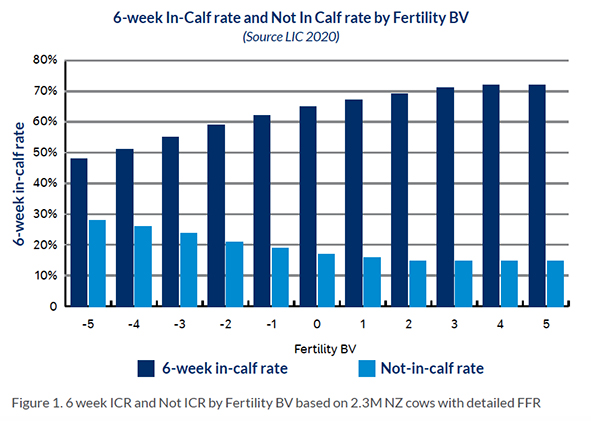
Farmers with high fertility herds may wish to set minimum thresholds for bull teams or to focus effort on their lowest fertility BV cows. This information aligns with the key messages from InCalf Australia, which encourages farmers to make use of bulls with good Fertility ABVs (over 105 for HF and over 103 for Jersey sires). Of the things you can influence on farm, picking the right straw is the easiest to implement. Use ABVs or NZ Fertility BVs to enhance genetic fertility and underpin your herd reproductive performance as you implement the other 6 key management areas; calf and heifer management, body condition and nutrition, heat detection, AI practices and mating strategies, cow health and stock bull management.
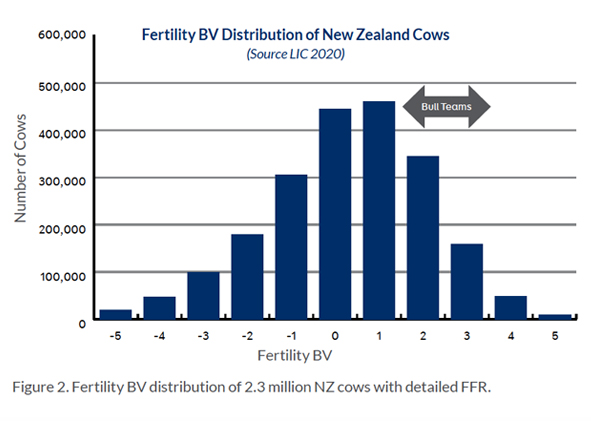
Latest NZ national stats set new records
Latest industry stats from NZ show genetic fertility and phenotypic reproductive performance are trending positively in the national herd. Fertility Focus report-based statistics are setting a few new records since monitoring started 10 years ago. By breed, genetic daughter fertility BV remains high for Jerseys and it is pleasing to see both HF and F X J cows now closing the gap as high fertility BV bull teams make an impact. (see figure 3) On the phenotypic side, the national 6 week in-calf rate hit another high point in 2019 at 67.8% 6 week in-calf rate. This increase followed on from gains in the previous 2 seasons. Average total joining length has now reduced to 10.7 weeks, the shortest on record. These latest season’s repro results are based on 2,377,370 cow records in
4430 seasonal calving herds throughout New Zealand with a detailed Fertility Focus Report in LIC’s MINDA™ herd recording software.
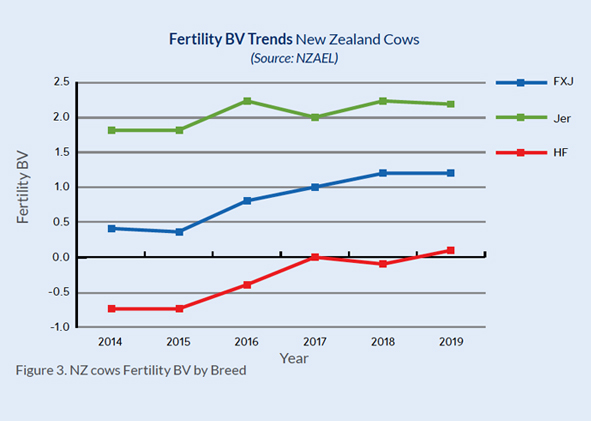
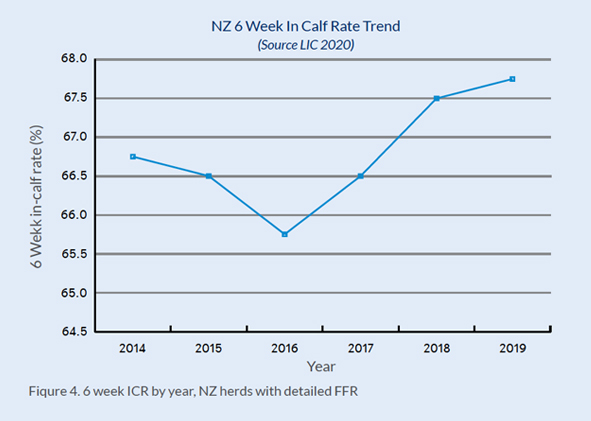
Your LIC Australia sales team can advise on the bulls available and their fertility BVs in both New Zealand and Australia. Because fertility takes time to be expressed, the genomic information included in LIC’s bull evaluations improves the reliability of fertility BVs significantly in younger bulls.
This article was published in our Spring 2020 Green to Gold publication.
